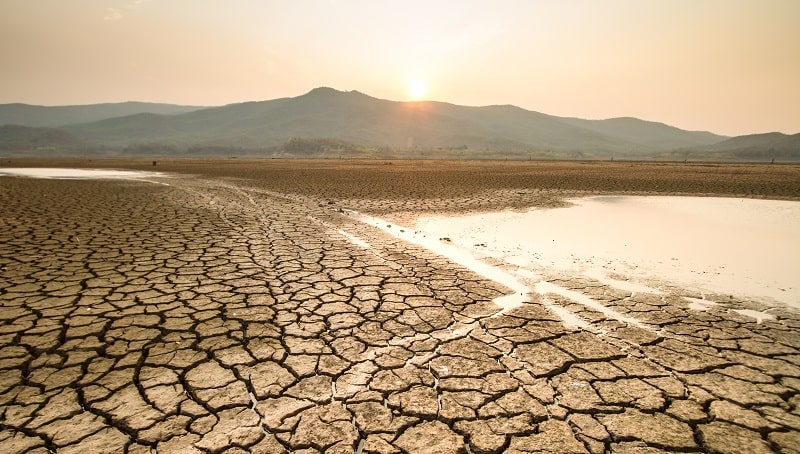Fossil fuels produce electricity, run car engines, make plastics, and power mills, factories, and industries. They have been a primary energy source for humans.
According to the US Department of Energy, they supply nearly 90 percent of our energy. This also clearly shows our dependency on fossil fuels. They are widely used, easily accessible, and even easier to transport.
But, this dependency on fossil fuels is one of the major causes of climate change. Burning fossil fuels emits greenhouse gases such as carbon dioxide, carbon monoxide, methane, nitrous oxide, which causes air pollution. Because of that, calls to minimize their use, and transition to using renewable energy instead have increased. Renewable energy sources are cleaner, safe, and environmental-friendly.
Even Shell, which is one of the major oil producers in the world, knew fossil fuels could damage the environment. Inside Climate News published an article wherein it states that Shell scientists wrote about the risks of climate change caused by fossil fuel emissions. Below, we will discuss the link between fossil fuels and climate change.
Amidst calls to cut fossil fuel use, the International Energy Agency reported that there is an increase in fossil fuel use worldwide specifically doubling last year from the 2022 rating. This stems from the reality that most countries still have a loose regulation in operating energy emissions. These emissions come from electricity generation, transportation, commercial, industrial, and agricultural industries.
Definition of Fossil Fuels
So, what are fossil fuels? Technically, Fossil fuel’s definition is, buried combustible geologic deposits of organic materials, formed from decayed plants and animals that have been converted to oil, coal, natural gas, or heavy oils formed under the ground millions of years ago. In other words, ancient plant and animal matter from millions of years ago became things we can burn for energy.
It is a non-renewable energy source. Once it is used, it can neither be reused nor renewed. Fossil fuel examples are coal, oil, petroleum, and natural gas, which are mainly extracted by drilling or mining.
Ways of Extraction
Coal is usually extracted from the surface or underground. Typically involving invasive methods of removing a large area of terrain or stripping the summit’s surface of the mountain.
Oil and gas exploration involves drilling or fracking. These oil and natural gas reserves require drilling onshore or offshore. Fracking, on the other hand, is a technique that impacts infusing water deep into subterranean rocks to create pressure in extracting oil or natural gas.
Advantages and Disadvantages
There are five (5) major reasons why different industries use fossil fuels, specifically:
1. A small amount of coal can produce a significant amount of energy thus making them a reliable source of energy.
2. Easy to transport.
3. There is already an established system from extraction, transportation to emission and distribution.
4. They are well-developed.
5. Most cars run on oil or petroleum.
But, the disadvantages far outweigh the advantages in the long run. Below are the five (5) cons of fossil fuels:
1. Oil spills and other hazards happen when transporting them
2. It is a non-renewable energy source.
3. It is costly.
4. It is causing air pollution.
5. Extraction can cause a rapid change to natural habitat since it involves drilling or mining.
How Fossil Fuels Cause Climate Change
The by-product of burning fossil fuels is carbon dioxide, which is a greenhouse gas. Carbon dioxide traps the heat from escaping out of the atmosphere – a phenomenon known as the Greenhouse Effect which further results in Global Warming or Climate Change.
An article published in the Leonardo Dicaprio Foundation pinpointed the major gas, oil, and coal producers as responsible for about one-half of the rise in average global temperatures. And, close to one-third of sea-level rise. The world is indeed getting hotter every day. Harsher climate conditions are now experienced all over the world.
Rise In Temperature
According to NASA, the rise in temperature has created a domino effect with potentially dire consequences, specifically: the rise in sea level, melting of glaciers and polar ice caps, extreme weather conditions, and shifting climate patterns or climate change.
Evidence shows that the world is indeed getting hotter every day. Evidence shows that the earth’s average temperature has gone up 1.4° F over the past century and is expected to rise as much as 11.5° F over the next.
A study shows that the melting of ice in Antarctica has soared by 75 percent in just ten years, which thereby increases the sea level.
Effects of Burning Fossil Fuels
The melting of polar ice caps, glaciers, and rise in sea level point to some of the negative effects of climate change.
The escalation in average earth’s temperature caused most of the wildfires, drought, and avalanches, an increase in water temperature that can affect the life cycle of sea creatures and can also cause unpredictable weather patterns that can lead to extreme storms.
Moreover, a lot of catastrophic events that affected mankind have occurred from hurricanes, storms, floods, acid rain to drought.
Alternative Energy Sources: Renewable Energy
To address the issue of climate change, one of the solutions is the transition to renewable energy instead of the latter.
By transitioning to renewable energy sources, we can have a much cleaner, safer environment. Another possible solution is to drive electric-powered cars which can drastically reduce air pollution. We can also opt to use bikes instead of cars or buses.
Renewable Energy Sources
Examples of renewable energy sources are solar, wind, hydropower, biomass, and geothermal sources, which are nearly endlessly available. Relying on renewable energy instead of non-renewable ones will be good for the environment and the future of humankind. It is a good alternative compared to non-renewable energy sources.
The sun, wind, and ocean produce an endless supply of energy and electricity.
In our own way, we can conserve energy and electricity, use solar energy for electricity and heat, and do other meaningful steps.
Time to Act is Now
Ultimately, fossil fuels are undeniably a major cause of climate change. Now is the time to act more than ever.
As Desmond Tutu said, “Twenty-five years ago, people could be excused for not knowing much, or doing much about climate change.” He continued, “Today we have no excuse.” The effects of climate change are felt every day and predicted to become worse in the next years.
Conclusion
But there’s still hope in reversing this downward trend for our planet. Self-funded companies have emerged, making renewable energy affordable and available to use.
People have been proactive in solving the dependency on non-renewable energy sources. According to West Coast Solar Energy, there is a new installation of a Photo-voltaic solar electric system every four minutes in the US alone. China is the leading country, with the most solar power installations.
We need to transition to renewable sources of energy. The rise of renewable or alternative sources of energy looks promising. We have but one world to live in; thus, we have a responsibility in taking care of Mother Earth. Not just for ourselves but for future generations.
-
Although disproved, the notion of a “climate change hiatus” is one that perpetuates in the…
-
The Arctic Shelf. Areas on our planet are defined by extremes. They represent the harsh…
-
The pika may be the next victim of climate change. Like animals across the globe,…
-
Oxygen is one of the most precious elements on Earth. Humans, plants, animals, and just…
-
If you pay any attention to the impact climate change is having on our planet,…
-
Methane gas is found in landfills, manure, and wetlands. Both natural and man-made activities produce…
-
The Colorado River winds its way through the Southwestern United States, ending in northern Mexico.…
-
Some people have proposed carbon sequestration as a solution to global climate change. But what…





